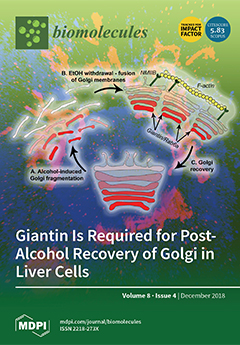1
Centre des Sciences du Goût et de l’Alimentation, AgroSup Dijon, CNRS, INRA, Université Bourgogne Franche-Comté, 9E Boulevard Jeanne d’Arc, F-21000 Dijon, France
2
French LipidomYstes Network, 31000 Toulouse, France
3
Toxalim, Research Centre in Food Toxicology, Université de Toulouse, INRA, ENVT, INP-Purpan, UPS, F-31027 Toulouse, France
4
Axiom Platform, MetaToul-MetaboHUB, National Infrastructure for Metabolomics and Fluxomics, F-31027 Toulouse, France
5
INTHERES, Université de Toulouse, INRA, ENVT, 31432 Toulouse, France
6
Laboratoire de Physiologie Cellulaire et Végétale, Université Grenoble Alpes, CNRS, INRA, CEA, 38000 Grenoble, France
7
MetaToul-Lipidomic Core Facility, MetaboHUB, I2MC U1048, Inserm, 31432 Toulouse, France
Abstract
Lipids are key molecules in various biological processes, thus their quantification is a crucial point in a lot of studies and should be taken into account in lipidomics development. This family is complex and presents a very large diversity of structures, so analyzing
[...] Read more.
Lipids are key molecules in various biological processes, thus their quantification is a crucial point in a lot of studies and should be taken into account in lipidomics development. This family is complex and presents a very large diversity of structures, so analyzing and quantifying all this diversity is a real challenge. In this review, the different techniques to analyze lipids will be presented: from nuclear magnetic resonance (NMR) to mass spectrometry (with and without chromatography) including universal detectors. First of all, the state of the art of quantification, with the definitions of terms and protocol standardization, will be presented with quantitative lipidomics in mind, and then technical considerations and limitations of analytical chemistry’s tools, such as NMR, mass spectrometry and universal detectors, will be discussed, particularly in terms of absolute quantification.
Full article






